How to Care for a Sick Kitten
Let’s face it — raising kittens ain’t for the faint of heart. When you’ve got tiny lives in your hands, every sneeze, weight drop, or missed feeding can make your heart race. Neonatal kittens are fragile little beings, and the first 12 weeks are packed with high stakes and unpredictable turns.
In this post, we’re going to rip the Band-Aid off and talk about the hard stuff — sick kittens. We’ll break down what can go wrong, what signs to watch for, and how to respond like a pro. Whether you’re nursing day-old neonates or wrangling wild 8-week-olds, this guide will give you the tools (and the confidence) to act fast and save lives.
Why Neonatal Kittens Are So Delicate
Newborn kittens are born with underdeveloped immune systems, making them highly vulnerable to infection, dehydration, hypothermia, and failure to thrive. They can’t regulate their body temperature or even eliminate waste without stimulation — they rely entirely on you (or their mama) for survival.
Some key vulnerabilities of neonates:
- Body temp must stay above 95°F or they can’t digest food
- Dehydration can happen within hours if nursing is disrupted
- Blood sugar crashes fast (hypoglycemia = danger zone)
- Immune system is immature until around 8 weeks of age
Fading Kitten Syndrome: The Hard Truth
Fading Kitten Syndrome (FKS) is one of the most terrifying experiences a breeder can go through. It’s not a disease, but a rapid decline in health usually due to underlying issues like infection, congenital defects, or poor maternal care.
Statistics breeders should know:
- About 15-30% of kittens die before weaning age
- The first 2 weeks are the most dangerous
- Many fading kittens show no symptoms until it’s too late
Signs of a Sick Kitten
It’s important to be able to how to tell if a kitten is sick. After you’ve experienced the behavior of a litter of kittens from birth until they go home, you’ll know how they normally act. Knowing the signs of a sick kitten will help you react in a quicker more proactive way.
- Weak suckle reflex
- Cold body, even in a warm room
- Constant crying or limp body
- Poor weight gain or sudden drop
- Pale gums or grey tongue
- Difficulty breathing
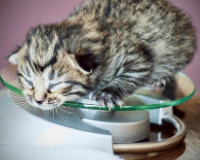
Weight loss: One of the first signs of a sick kitten is weight loss. This isn’t always an indicator, however. Weight loss can be caused from lack of milk supply or a negligent Queen.
Fever: A normal temperature for a kitten is between 100.5 and 102.5 degrees Fahrenheit. Rectal thermometers will always give the most accurate results. The digital ear thermometers that are made for humans also work great in kittens. If you see your kitten shivering, this could indicate a fever. Additionally, if the Queen senses a fever in her kitten she will wash the kitten more than normal. You may find the kitten more wet than usual. This is how the mom helps to reduce the fever in her young.
Vomiting: Vomiting in a kitten, especially a young kitten that hasn’t left the nest yet, is an indicator that he’s not feeling well. There can be various reasons for vomiting in your kitten.
Diarrhea: Since the kittens can’t use the bathroom on their own, the Queen will toilet the kittens. She does this for about the first 4 weeks of their life. You may see light poop in the nest, but it shouldn’t be excessive. The Queen will keep her area clean. If you notice liquid, runny, or watery diarrhea or odd-colored poop (white, bloody, black), then you may have a sick kitten.
There will come a time in every cat breeder’s career when they will need to care for a sick kitten. It’s a very scary and humbling experience to have the life of a little kitten in the palm of your hands. With young kittens, especially neonatals (0 -14 days old), the most important part is being able to recognize that you have a sick kitten. Then, having a protocol in place to start a treatment plan in an effort to help with the symptoms until the kitten is feeling better.
Treatment Plan (Emergency Protocol):
- Warm the kitten FIRST – don’t feed a cold kitten
- Administer glucose (a drop of honey or Karo syrup on gums)
- Rehydrate with sub-Q fluids (Lactated Ringers)
- Antibiotics or antivirals
- Supportive care every 2 hours, even overnight
Pro Tip: Keep a “fader kit” on hand with supplies like glucose, fluids, needles, heating pads, and a thermometer. You won’t have time to run to the vet when seconds count.
In this Cat Breeder Sensei Says Podcast Episode, you’ll learn how to identify the first signs of a sick kitten, and then hear some tips on how to implement a treatment plan on your own.
Most Common Health Issues from 0–12 Weeks
Knowing what to expect — and what’s treatable — makes all the difference.
1. Hypothermia
Hypothermia is when a kitten’s body temperature drops too low, usually below 95°F, and they can’t warm themselves back up. Since newborn kittens can’t regulate their own body heat, they rely on external warmth — like their mom, a heating pad, or your hands. If they get too cold, their bodies stop working properly: they can’t digest food, they become weak, and if it’s not corrected quickly, it can be fatal. That’s why keeping them warm at all times is one of the most important parts of raising healthy kittens. Most of the time, the Queens do all of the work keeping the babies warm.
- Common in orphans or rejected kittens
- Symptoms: Cold, unresponsive, weak
- Treatment: Slow warming with heating pad or incubator
2. Hypoglycemia
Hypoglycemia is when a kitten’s blood sugar drops too low, which can happen really fast if they miss a feeding, aren’t nursing well, or are too cold to digest food properly. Sugar (glucose) is what fuels their little bodies and brains, so when it runs out, they can get shaky, weak, cold, unresponsive, or even start having seizures. It’s a medical emergency in kittens, especially under 4 weeks old. A quick fix is to rub a tiny bit of honey or Karo syrup on their gums to boost their sugar levels, but you still need to figure out why it happened so it doesn’t happen again.
- Caused by missed feedings or poor absorption
- Symptoms: Tremors, lethargy, seizures
- Treatment: Rub glucose on gums, then feed when stable
3. Dehydration
Dehydration is when a kitten doesn’t have enough fluids in their body, and it can become serious very quickly. Tiny kittens lose moisture through their skin and waste, and if they’re not nursing well or have diarrhea, they can get dehydrated in just a few hours.
Signs to watch for include dry gums, sticky saliva, sunken eyes, and skin that doesn’t bounce back when gently pinched. If a kitten is dehydrated, they can’t absorb nutrients or fight off illness properly. The best way to treat it is with fluids — either by syringe feeding an electrolyte formula or giving subcutaneous fluids under a vet’s guidance.
- Fast onset in kittens not nursing properly
- Check: Gently pinch skin – if it stays tented, kitten is dehydrated
- Treatment: Sub-Q fluids or syringe feeding formula with electrolytes
4. URI (Upper Respiratory Infection)
A URI, or Upper Respiratory Infection, is basically a kitty cold — and it’s super common in kittens, especially in catteries. It’s caused by viruses or bacteria like feline herpesvirus or calicivirus, and it spreads fast through sneezes, shared litter boxes, or even your hands. Symptoms include sneezing, watery or crusty eyes, nasal discharge, and sometimes a loss of appetite because they can’t smell their food.
While it’s usually not deadly, it can become serious if left untreated, especially in young kittens. Treatment usually includes antibiotics (if there’s a bacterial infection), eye drops, and supportive care like steam therapy or nebulizing with saline to help them breathe easier.
- Common in catteries or with poor ventilation
- Symptoms: Sneezing, runny eyes/nose, difficulty breathing
- Treatment: Antibiotics, nebulizer with saline, supportive care
5. Diarrhea or Constipation
Diarrhea in Kittens
Diarrhea means the poop is runny, watery, or unusually frequent — and in young kittens, it can be dangerous fast. It usually happens because of overfeeding, sudden changes in formula, parasites (like coccidia or giardia), or even stress. Diarrhea can cause dehydration and poor weight gain, so it’s something you don’t want to ignore. If you notice messy bottoms, sour smells, or stool that’s yellow, green, or foamy, it’s time to investigate and possibly treat with dewormers, probiotics, or vet-prescribed meds depending on the cause.
Constipation in Kittens
Constipation is when a kitten can’t poop regularly or their stool is hard and dry. This can happen if they’re not being stimulated to go potty (especially in orphaned kittens), are dehydrated, or if the formula is too thick. You might notice a swollen belly, straining with no results, or fussiness during feedings. Treatment can include belly massages, warm, wet cloth stimulation, adjusting the formula mix, or in some cases, a gentle enema from your vet.
- May be due to overfeeding, parasites, or formula issues
- Treatment: Adjust formula, deworm, probiotics
6. Umbilical Infections (Omphalitis)
Omphalitis is an infection of the umbilical cord stump — the little bit that’s left after the cord is cut or falls off. In healthy kittens, it dries up and heals without a problem. But if bacteria sneak in (from dirty bedding, rough cutting, or poor hygiene), it can cause swelling, redness, pus, or a bad smell around the belly button. This is dangerous because the infection can travel into the bloodstream and cause sepsis, which is life-threatening in newborns.
If you notice any signs, it’s important to clean the area gently and get the kitten on antibiotics right away. Keeping the nesting area clean and cutting cords with sterilized scissors can help prevent it.
- Bacterial infection at the cord site
- Symptoms: Swollen, red belly or foul smell
- Treatment: Antibiotics, antiseptic cleaning, vet care
7. Coccidia & Giardia
- Causes diarrhea and weight loss
- Treatment: Albon (for coccidia), Metronidazole or Panacur (for giardia)
When Are Kittens Out of the Danger Zone?
The riskiest window is birth to 3 weeks — especially days 3 to 10.
Once they:
- Open their eyes
- Start gaining steadily (10–15g/day)
- Can regulate temperature
- Begin exploring
…you can breathe a little easier. But don’t slack — even 6–8 week-olds can backslide fast, especially during weaning.
How to Take Care of a Sick Kitten
Caring for a sick kitten is one of the most emotional and intense parts of being a breeder. These tiny creatures depend on us for everything — warmth, food, comfort, and protection — and when something goes wrong, it can go downhill fast. From the moment they’re born, kittens are delicate and vulnerable, especially in the first few weeks of life. Whether you’re dealing with a fader, a respiratory infection, or just a kitten who’s not gaining weight like they should, knowing what to look for and how to act quickly can make all the difference. ot at thriving.
Weigh Your Kittens Every Day
When your kittens are born, start a weight chart for each one. Weigh them at birth, and then every day after that for at least the first 14 days. A kitten should gain about half an ounce every day. Weigh the kitten around the same time every day to follow a routine. Write the weights down for each kitten in the litter and monitor them for gains. Once they’re out of the neonatal stage and are doing well with weight gain, you can weigh them once per week.
If your kitten does not gain weight for one day, do no panic. Weigh him again at the same time the next day and check his weight. If he gains weight on the second day, everything is fine. If he stays the same weight or loses weight, then you need to start checking for troubles.
NOTICE: Always consult with a veterinarian if you are uncertain about the treatment plan for any kitten. These are only suggestions, and may not be the right one for your kittens!
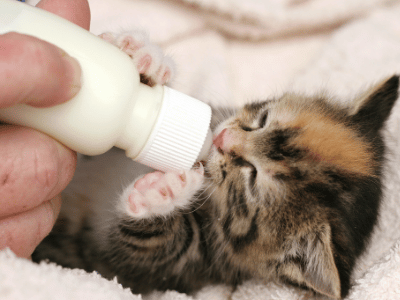
Supplement with Kitten Formula
Any time your kitten is not gaining weight, you can supplement his nutrition with kitten formula. There are several brands of milk made just for kittens. Keep some on hand in the event of an emergency. Never feed a kitten cow’s milk. They do not digest that well. It doesn’t provide the nutrition your kitten needs.
Keep the Kitten Warm
Make sure that you are keeping your kitten warm. He is unable to regulate his own body temperature for about 3 weeks. If he doesn’t seem warn enough, a kitten warming disc placed in the nest will offer some warmth. Be sure to lay the disc underneath a baby blanket or t-shirt to make sure that it’s not too hot.
Antibiotics
If your kitten is feeling sick, an antibiotic treatment may be necessary to treat or prevent any secondary infections that are present. Clavamox drops are usually the antibiotics of choice for small kittens. Clavamox is only available through a prescription from your vet. Talk to your vet about allowing you to have some on hand. It can be kept in the refrigerator when you are expecting a litter of kittens.
Slippery Elm Bark
This is a very safe and non-toxic natural supplement that is used to treat upset stomach, constipation and diarrhea. Typically, the dose is 1/4 teaspoon of slippery elm bark per 10 pounds of cat. The dose for a baby kitten will be only a fraction of that, or a pinch if you will. Consult with your veterinarian to get the recommended dose for kittens.
Sub-Q Fluids: (subcutaneous)
Kittens with diarrhea and/or vomiting are highly prone to dehydration. You or your vet can administer fluids to the kitten to rehydrate him. The fluid is deposited into space under the skin. Watch the video below to learn how to administer Sub-Q fluids to your kitten.
Breeding Pedigree Cats is a serious business. While it may seem simple on the surface, there’s a lot of moving parts and knowledge to gain. You can learn how to breed cats and have the confidence that you need to gain trust and enthusiasm from cat lovers everywhere.
When you enroll in the Complete Guide to Breeding Pedigree Cats, you’ll learn how to breed cats with integrity and confidence. You’ll learn the basics of breeding cats that some mentors would never be willing to share with you.

What’s Covered in the Course
- All of the fundamentals of Breeding Pedigree Cats
- Designing a cattery in your home,
- Acquiring breeding cats
- Feline Husbandry
- Health Testing
- Colors and Patterns
- How to Read Pedigrees
- Inbreeding Coefficiencies
- DNA testing
- Mating
- Pregnancy
- Delivery of Kittens
- Raising and Selling Kittens
- Literally, everything is covered in this course.
- Quizzes for each lesson to make sure you’re comprehending the material
- Certificate of Completion to display on your website
- Interactive Forums to ask questions about the lessons and topics

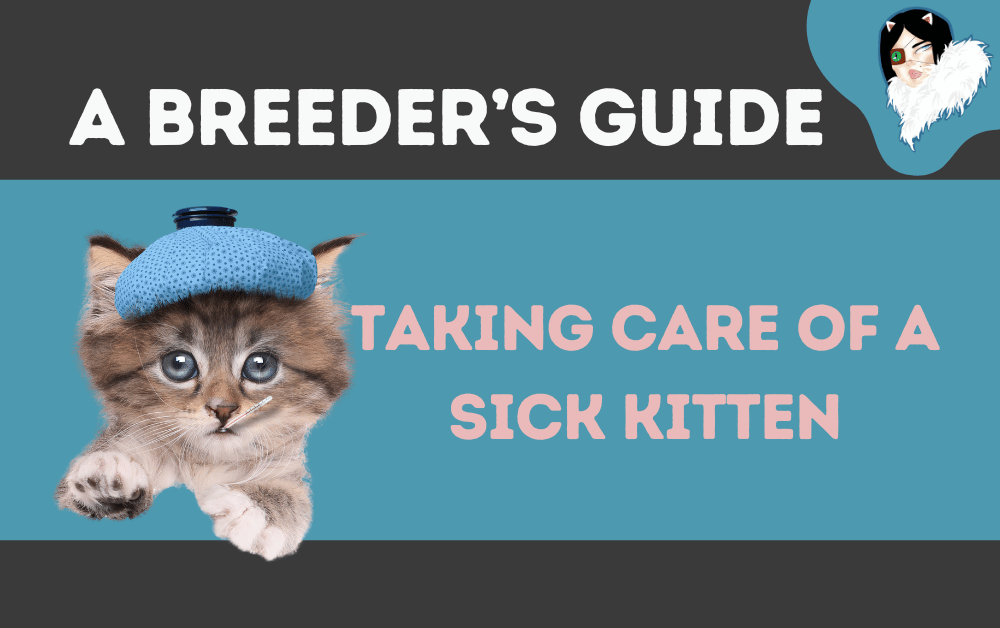
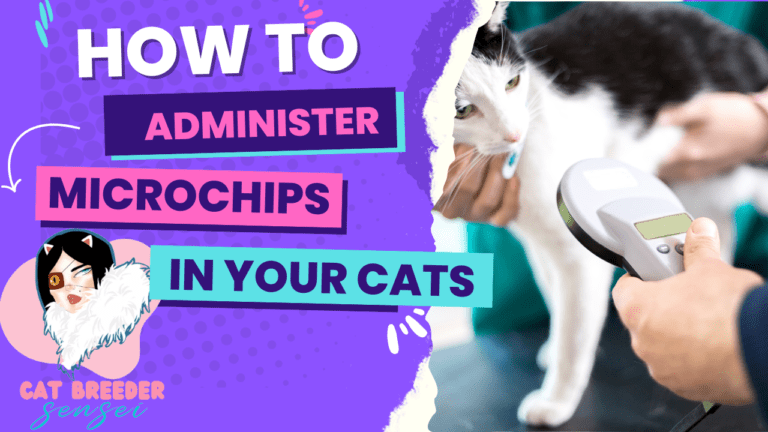
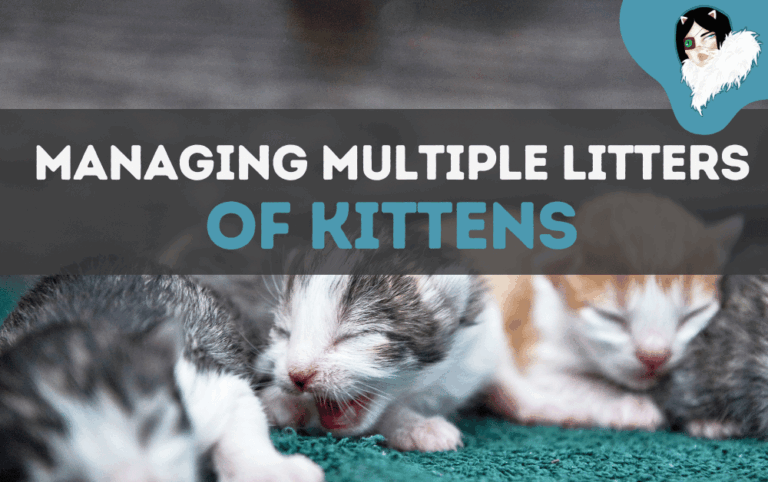
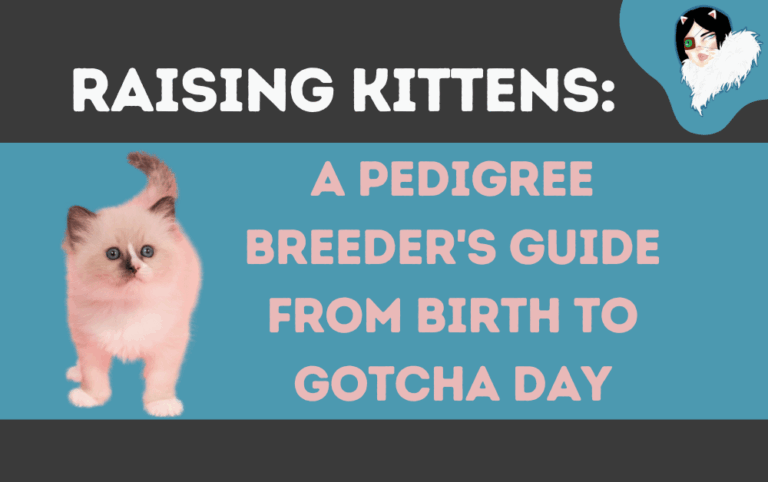

Need advice I have a sick kitten sadly my two other kittens passed away just yesterday and I need advice for the one I have currently it won’t eat very weak and basically sleeps all day
Please join our Facebook Group to ask questions and get help with your kittens. Thank you !